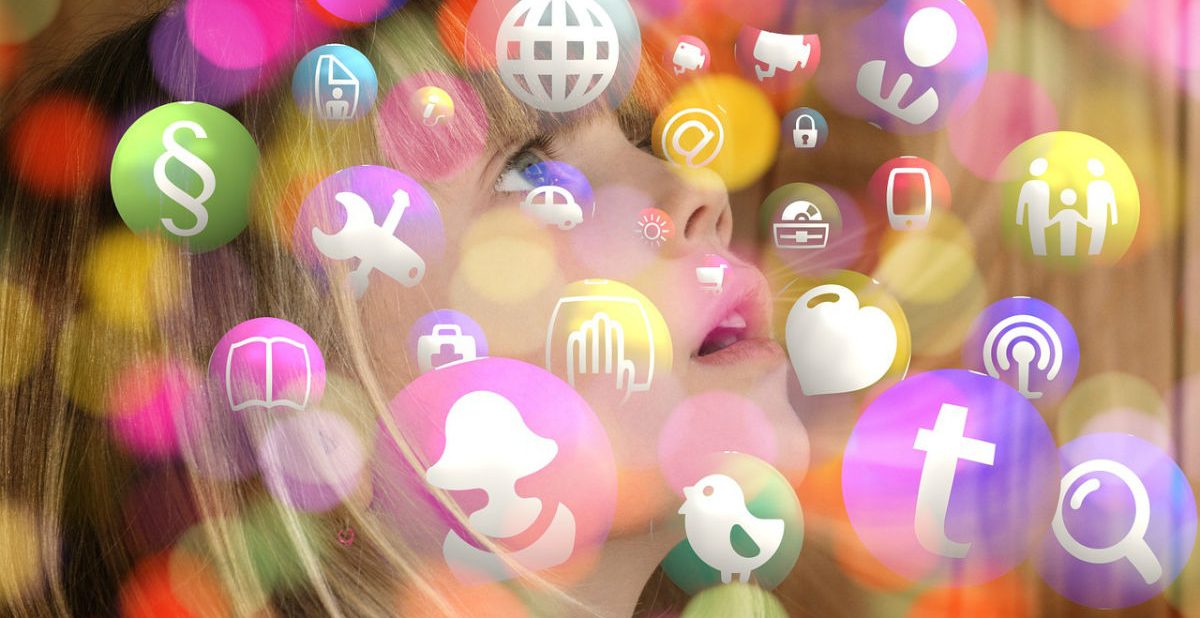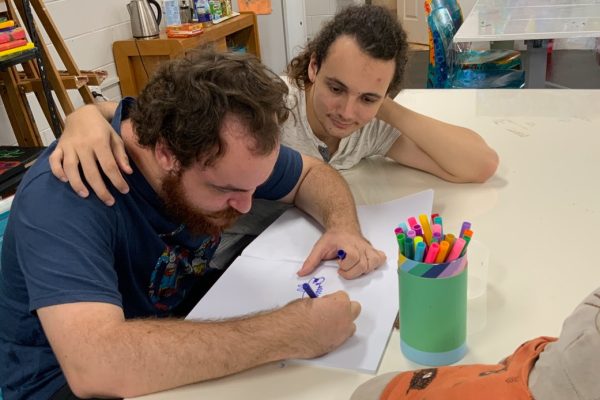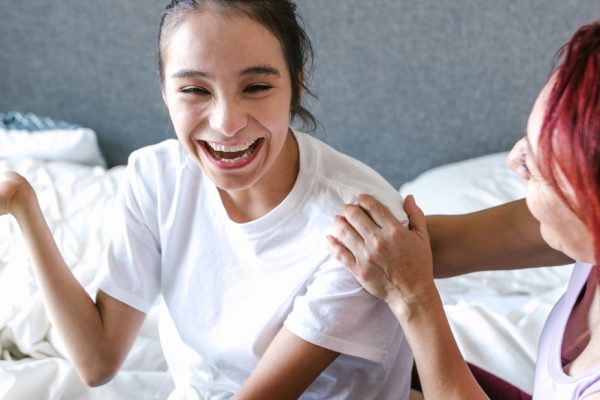
Online relationships and social media safety
By Tricia Munn, Eyes Open Social Media
Age appropriate social media platforms, apps and games can be a unique opportunity for children and young adults with a disability to:
• have a voice in a world where they are sometimes not heard;
• find connection, networks and support through community groups;
• enjoy chat rooms; or
• play in a virtual world that gives them opportunities they may otherwise not experience.
The use of technology can also be a pathway for offering a child with special needs more independence into their teens and young adult life.
However, there is no denying that offering any child an internet enabled device is a decision that most parents face with an element of fear and anxiety. That fear and anxiety can also be significantly more confronting for a parent who knows their child may have increased vulnerability in the online world.
INCREASED VULNERABILITY
For EVERYONE the possible negative outcomes (or risks) are the same. The only thing that changes is how vulnerable you are to those outcomes at any given time.
Some children may have increased vulnerability online due to a possible lack of cognitive ability to filter personal information from information that they share online. Some may also experience a reduced ability to recognise authenticity of some of the content they are reading or exposed to.
Digital literacy and critical thinking are crucial skills required for a social media user to evaluate content as to what response is appropriate and, in some circumstances, whether a response is required at all. Many children find this element of social media difficult to navigate, without any additional challenges..
THE POTENTIAL RISKS OF SOCIAL MEDIA
• Exposure to or creation of inappropriate material;
• Creation of a poor or vulnerable online presence (your digital footprint);
• Identity theft (your identity being stolen or a fake identity being used to exploit you);
• Cyber bullying; and
• Predators
HOW YOUR CHILD BECOMES VULNERABLE TO THESE RISKS
A person’s use of social media can inadvertently put them at risk because every interaction on a site or an app can leave information that may give away unintended details about your life. Therefore, the biggest risk factors on social media are:
• The content or information that is present online about your child
• The ability for the wrong people to access that information
If information is easily gathered by the wrong people, it can be used to gain the trust of or exploit your child.
LESS VISIBLE CONCERNS OF SOCIAL MEDIA
Impacts for vulnerable social media users and their family, may not just be the issues that can be seen:
- The uncertainty a parent feels about potentially inadequate privacy and security settings on their account.
- A child being confronted with aggressive, toxic, or inappropriate communications and not being equipped to manage or de-escalate the fallout.
- Not recognising inappropriate or bad behaviour early enough to manage and minimise the damage.
- Social media issues impacting desire or enthusiasm to attend school, work, or other necessary activities.
- Mental health issues stemming from or exacerbated by social media
ASSISTING YOUR CHILD TO USE SOCIAL MEDIA IN A POSITIVE WAY
Identify positive outcomes your child could enjoy from social media use:
It is important as a parent to understand your child’s motivations for using social media in order to not inadvertently impede your child from achieving their social media goals through restrictions that you apply. Particularly if the restriction is possibly unnecessary or could be applied in a different way, allowing your child to still achieve their goals.
The reason for this is simple, if a restriction is put in place that impedes your child from reaching their goals they may simply remove the restriction rather than have a discussion about it, leaving them vulnerable or at risk.
Create a plan with your child to achieve their goals.
If there is an understanding of what your child wishes to achieve then there is also a perceived interest in assisting your child to achieve their goals. Therefore, parent and child can work together to create a plan to apply safety measures that still allow the child to achieve their goals.
The child may also ask for assistance in reducing or applying alternative safe restrictions that still allow them access to the features they wish to access,
if a setting is impacting the use of a desired feature.
ASSISTING YOUR CHILD TO USE SOCIAL MEDIA AS SAFELY AS POSSIBLE
Remember the two most crucial risk elements (content and lack of security)
As information that is available and the ability to access that information is the biggest risk for social media users, it stands to reason that the two most important elements in reducing risk for young people on social media is to apply effective privacy & security settings and to teach them to think before posting.
Parents need to ensure that they assist with applying the privacy & security and are continuously discussing and modelling appropriate social media use.
Get educated about security settings on all sites your family is using
Social media safety awareness sessions are held at schools most years.
Parent attendance is reported to be extremely low. Parents should attend regularly as the sites and the information is constantly changing, and information that wasn’t relevant to you last time, may now resonate.
The most important step is to upskill from an expert on what you need to be adding privacy & security to and how to actually apply that knowledge to the sites you are planning to use or allow your child to use.
Offer open non-judgemental discussion to allow children to learn to identify predatory and manipulative behaviours.
Showing an interest in what your children are doing and what they want to achieve gives you the opportunity to continually remind them of things that could go wrong and also has you close to the action when things go in the wrong direction.
Workshop managing abuse with your child
Quick and efficient strategies for managing abuse is critical to minimise the harm to the victim.
Workshopping the options that a child has to manage abuse online allows the opportunity to teach and practice steps that could be taken in different scenarios of online abuse.
When a child practices the steps, it gives them further opportunities to remember the content so that they can quickly recall and apply the steps they need to take when a toxic or abusive situation arises on social media.
APPLYING PRIVACY & SECURITY
Adding privacy is the act of choosing who sees what on your social media accounts. Even though you choose to connect with someone, there is still information that they should need to ask you for, such as other ways to contact you and when your birthday is.
You may choose to give them this information, but it is not safe to have it sitting visible on your account just in case you accidentally add the wrong person, or one of your friends accounts is hacked and a criminal gets access to the inside of your personal account.
Three steps you can take to add more privacy to your accounts:
- Check what people can see if they have not been added as a contact on your account.
- Make decisions about content that people who are connected can see.
- Even though people may be added as a friend, it is still not safe to leave personal information on your account for them to access such as phone number, email address and your “friends” list.
INCREASING SECURITY
Increasing your security makes it more difficult for someone to break into your account and pretend to be you. If someone is able to login to your account, remember they will also be able to see into your friend’s private accounts that they have trusted you to see.
Three steps you can take today to increase your security:
- Ensure you have a password or pin number on all of your devices that are logged in to your social media accounts
- Apply good strong passwords to all accounts. Use a long combination of lower case letters, capitals, symbols and numbers. Never use the same password on more than one account.
- Add 2-factor authentication on all accounts possible.
Eyes Open Social Media provides education about the risks associated with social media use to families, schools and community organisations. Schools are welcome to reuse the information contained in the article above and can visit www.eyesopensocialmedia.com.au for more information and resources. You can also call 0402 594 108 for a chat.








